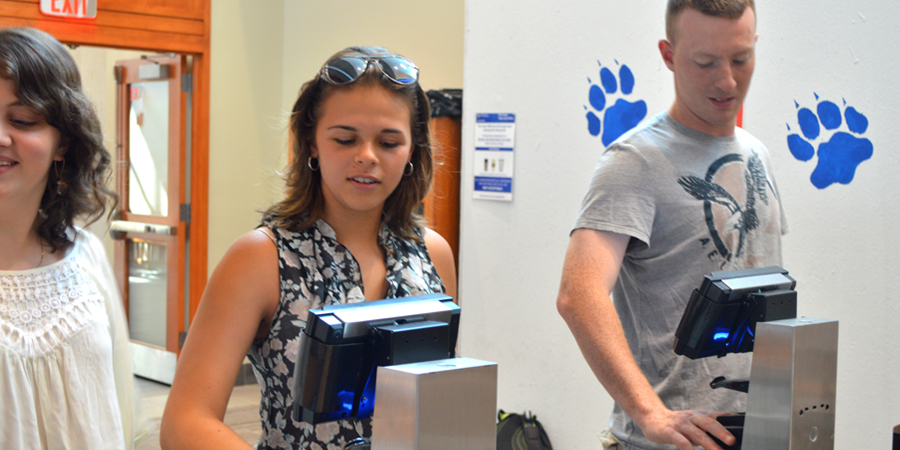
Meal Plan Access
Our dining hall access system utilizes biometric finger/vein scanning technology. All meal plan holders (including Swipe plan holders) are required to enroll in the system in order to enter the dining halls.
Biometric technology uses a combination of two biometric readings, fingerprints and finger veining that result in the #1 rating in enrollment and identification accuracy.
The technology takes measurements from your fingerprints and finger veins and creates an algorithm. The number that results from these readings is saved. When you return and use the reader, the measurements are taken again and verified against the stored measurement-when they match within a certain tolerance-you are granted access.
UNH Dining does not store fingerprint or finger vein information. You will not need your ID card to enter the dining halls in the future for any meal plan. You will simply scan your finger for quick access.
Frequently Asked Questions
Finger vein recognition technology is a method of biometric authentication that uses pattern-recognition techniques based on images of human fingerprints and finger vein patterns beneath the skin's surface. A specialized device uses Near-infrared light to capture a unique fingerprint and finger vein pattern profile, which is then matched with a pre-registered profile to verify individual identity.
The Finger Vein Technology is intuitive and highly secure. Blood vessel patterns are unique to each individual, as are other biometric data such as fingerprints. Unlike some biometric systems, blood vessel patterns are almost impossible to counterfeit because they are located beneath the skin's surface. Biometric systems based on fingerprints can be fooled with a dummy finger fitted with a copied fingerprint; voice and facial characteristic-based systems can be fooled by recordings and high-resolution images. The finger vein ID system is much harder to fool because it can only authenticate the finger of a living person.
No actual fingerprints are taken or stored. When an individual inserts a finger into the terminal, a special camera that uses near-infrared LED light takes a picture of the individuals fingerprint and finger veins which creates a pattern of lines. The camera records the pattern and then converts the raw data into an algorithm.
Finger scan machines are frequently cleaned and sanitized. Hand sanitizer is available throughout the dining halls.
Light transmission has satisfied JISC6802 safety standard and has thus been confirmed to have no harmful effects on the human body.
